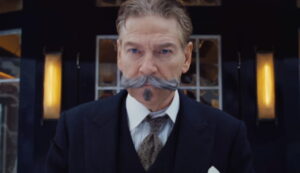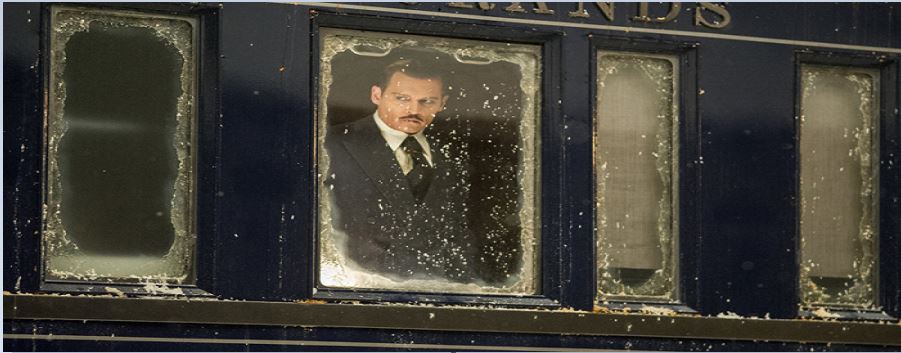Agatha Christie’s eccentric, egotistical (self-proclaimed “probably the best detective in the world”) Poirot is back with Kenneth Branagh’s enchanting remake of ‘whodunnit’ Murder on the Orient Express.
Disclaimer: Spoilers Alert
Aboard the Orient Express is a carriage full of passengers, presumably strangers, travelling together. A snow avalanche causes the train to become stranded on the second night of the journey, during which a passenger, the sinister Mr Ratchett, is murdered. Ratchett is revealed to be Cassetti, a man who infamously kidnapped and brutally murdered three-year-old Daisy Armstrong. As Poirot draws the evidence together, sorts the real clues from the fake, avoids red herrings, extensively interviews each passenger on board, and finally sits back and lets his little grey cells do their job, an odd pattern emerges. Each person in the carriage is related, in some way, to the Daisy Armstrong case.
To keep up with each tiny hint and intricate plot twist, you really need to pay close attention.
The film is classic British crime at its best. A stranded train, a dead man and a vast selection of affluent yet sinister passengers; one of whom must be the killer. There were no speedy car chases, sirens, police raids or steamy love affairs, which we’ve become accustomed to in the drama genre. It was a pure, clean-cut mystery – with just a pinch of Hollywood spice (yes, I’m talking about that gun scene – and that one too).
Kenneth Branagh led the exquisite cast as detective Hercules Poirot, giving a performance almost as big as his character’s famous moustache. He was joined by Judi Dench, Johnny Depp, Daisy Ridley, Michelle Pfeiffer (whose powerful performance as Mrs Hubbard was inspiring) and Penelope Cruz, among others.

Given that the ending of Murder on the Orient Express is one of the worst-kept secrets in the history of literature, Branagh really had his work cut out for him. He managed to weave suspense, engagement and humour so that, even though I knew the ending, I was sitting on the edge of my seat the entire time.
The tale is very specific to the 1930’s, with little room for adjustment. He did incorporate several changes, however. John Armstrong, in the film, had written to Poirot for help before his death. By the time the detective received the letter, it was too late. This gave Branagh’s Poirot a renewed motive for solving the case. Several character relationships were also shifted. M. Bouc was shifted from the old director of the train line to the director’s cheeky younger son. Susanne Michel, the maid blamed, became Pierre’s sister, not daughter.
Frames of the beautiful European mountains in drizzling snow were absolutely enchanting. They made a powerful contrast against the cramped corridor shots from inside the carriage, which ignited anxiety and fear from being stuck with a murderer in such a confined space.

